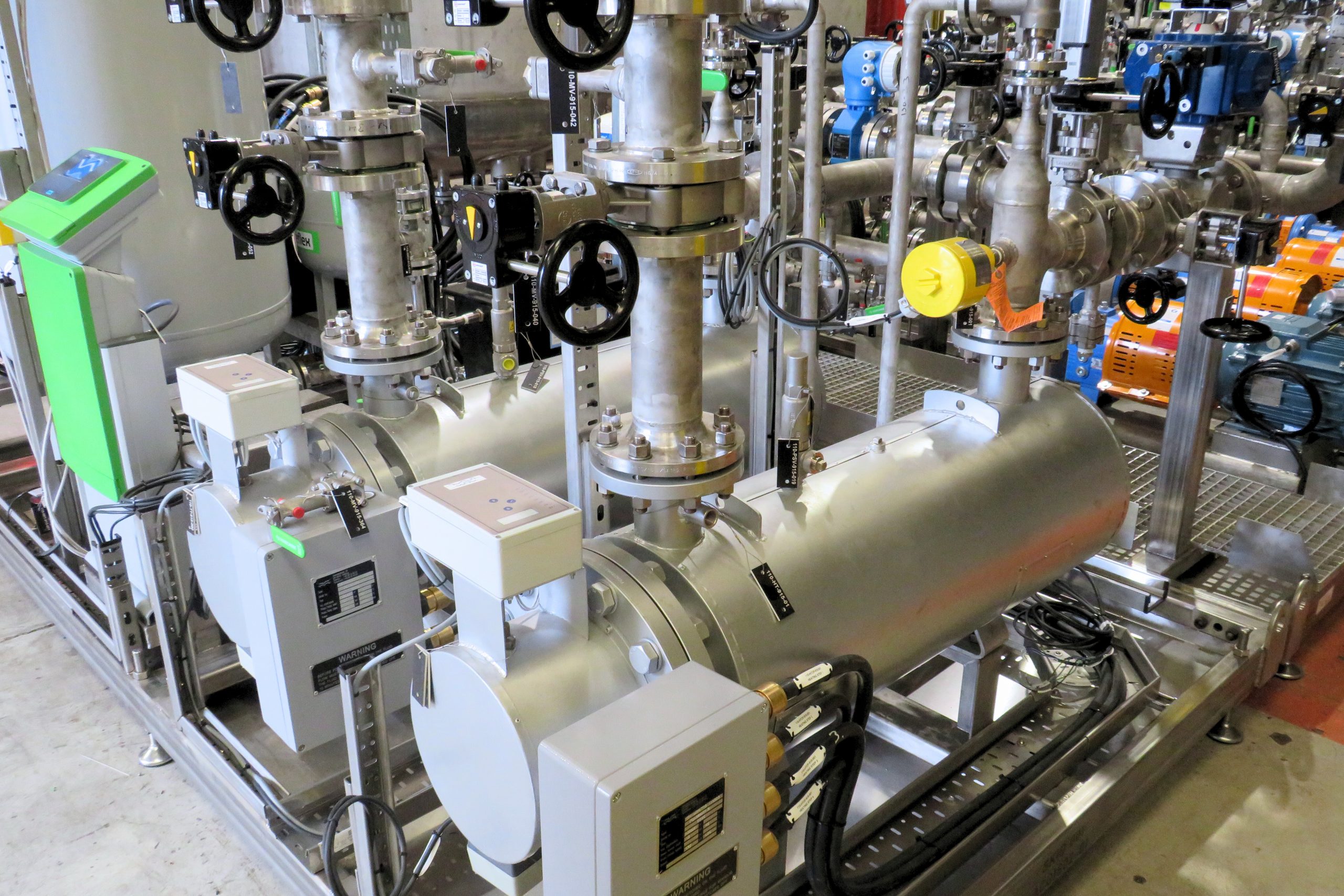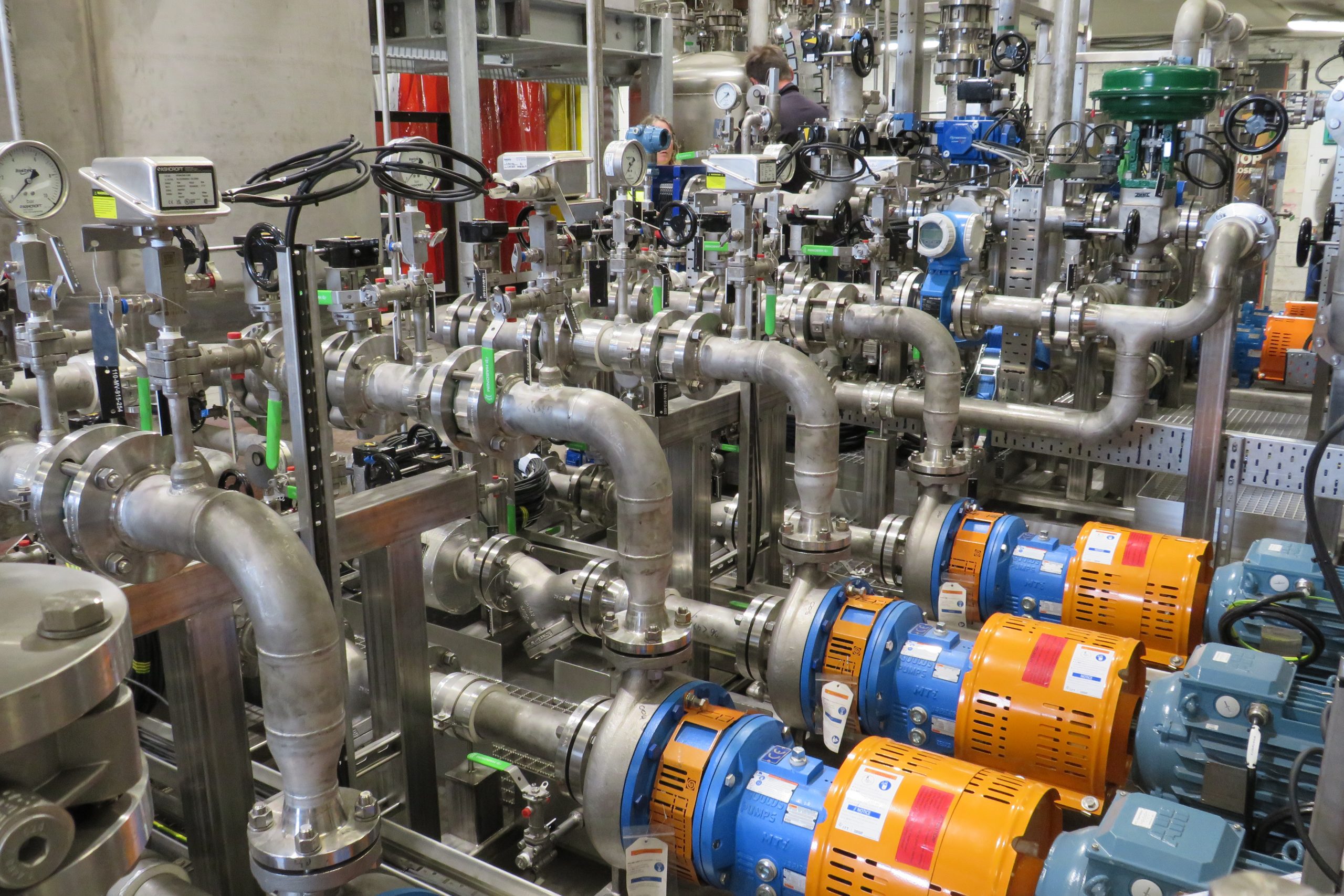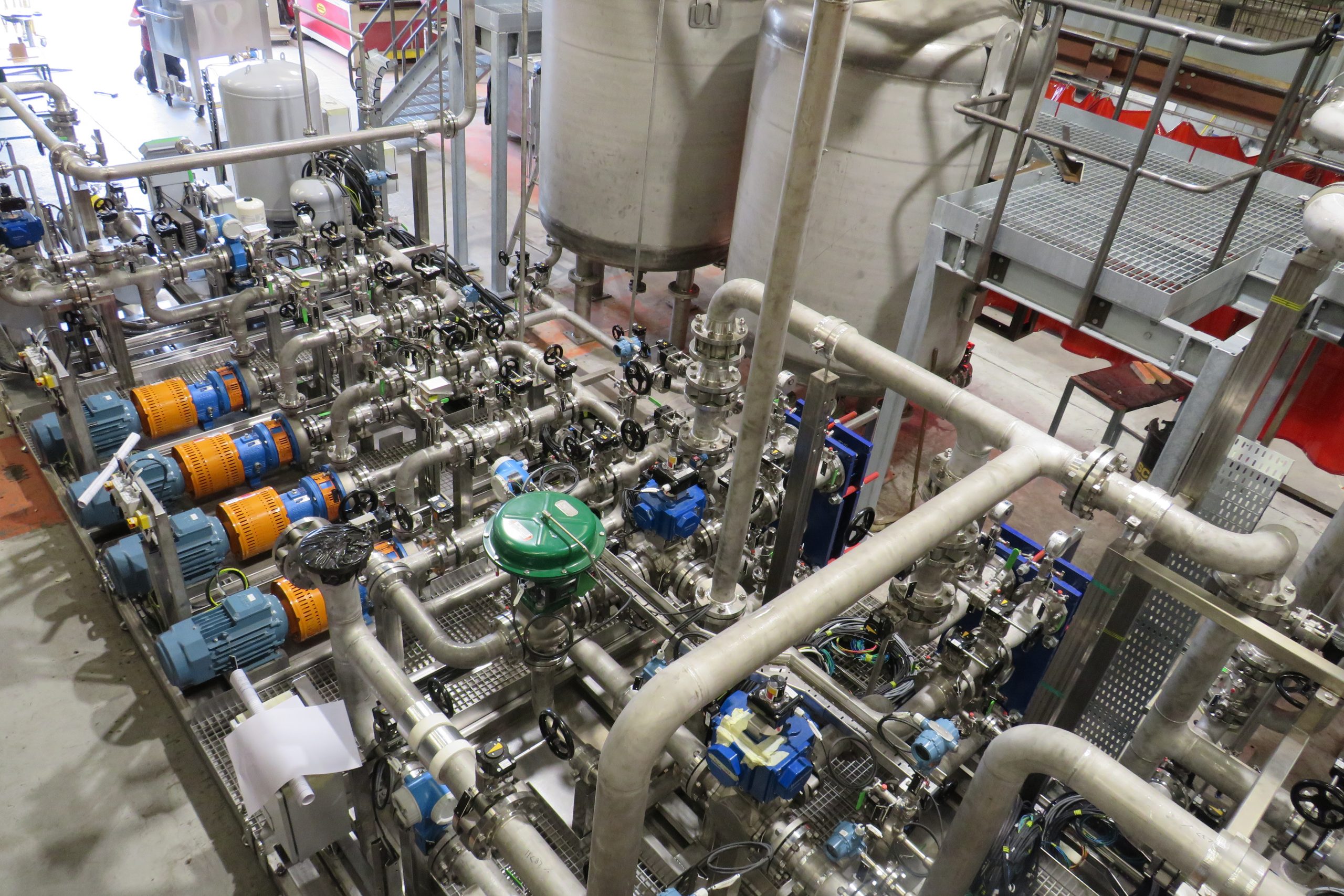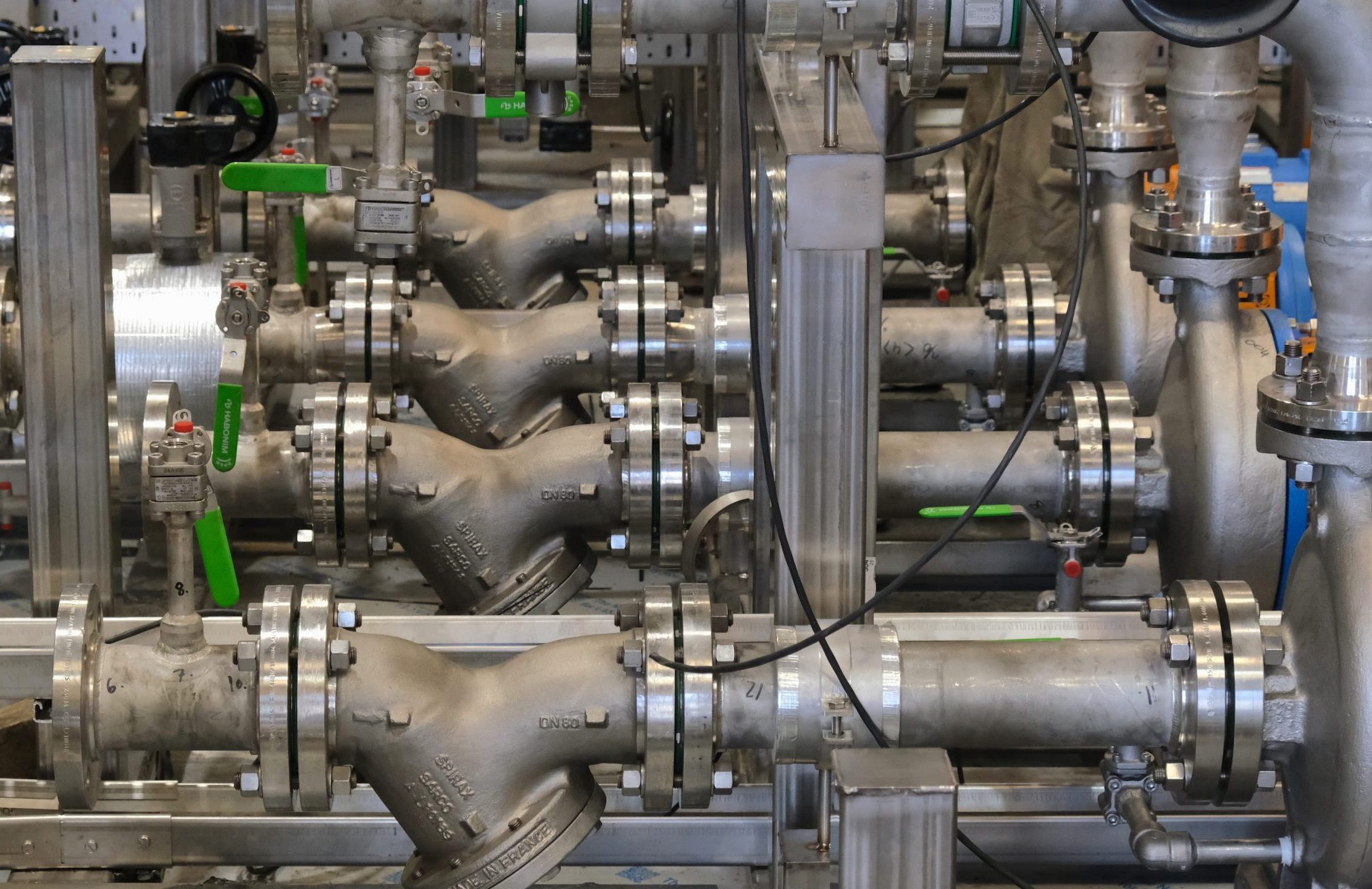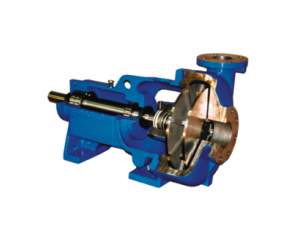At ESI Technologies Group, we’re constantly pushing the boundaries of innovation to deliver cutting-edge solutions for our customers. Our latest achievement, the design and construction of our largest electric heating skid system to date, stands as a testament to this commitment. This project presented unique challenges and offered exciting opportunities to showcase our expertise in energy-efficient and sustainable engineering.
Our lead engineers, John Power, John Scott & Alan Venner answer some key questions about this exciting project, offering an in-depth look into its design, construction, and the future of electric heating skid systems.
Question: This is ESI’s biggest skid to date – What were the primary technical challenges encountered during the design and construction of this large-scale electric heating skid system?
Answer: This project presented several technical hurdles, primarily driven by its larger scale and the need to replace an existing, inefficient steam glycol heating skid. The old system was significantly oversized, making it quite difficult to control at low standby kW values and react quickly to high-demand peaks.
Our solution involved proposing a more efficient system utilising a thermal buffer tank and an electric heater. The size and complexity of this new system necessitated extensive collaboration. We engaged closely with all client stakeholders, encompassing a wide range of disciplines due to the intricate control requirements of the skid. Furthermore, we worked hand-in-hand with our fabricators and electricians throughout the design phase, focusing on both process and mechanical aspects.
This intensive upfront engagement paid dividends. The resulting 3D model and subsequent general arrangement and electrical drawings were the most comprehensive we’ve ever produced. This meticulous planning significantly minimised issues during the construction phase, with very few problems arising after the drawings were signed off.
Question: Can you elaborate on the specific design choices made to enhance energy efficiency and reduce CO₂ emissions in this system?
Answer: Energy efficiency and CO₂ emission reduction were central to our design for this skid. Early on in the process design, we identified the critical need for fast-response heating. The decision to employ electric heaters was pivotal here. By generating heat locally, we dramatically reduced the transmission and distribution losses inherent in steam-based systems. This direct heating approach makes the overall skid significantly more energy efficient than using equivalent plant steam power.
Beyond efficiency, electric heating offers a crucial advantage: it allows our client to leverage any renewably generated electricity they may have available – an option that is not feasible with the currently installed gas boilers and can also cut carbon emissions significantly.
Further enhancing energy efficiency, the main pumps on the system are equipped with variable frequency drives (VFDs). This allows the control system to precisely regulate pump speed and, consequently, energy consumption when lower heating outputs are required.
We also considered the entire lifecycle of the system. For instance, we opted for T-Fit insulation shells (onsite installation) which cut energy loss, save space, & simplify maintenance, contributing to both cost and environmental savings.
The heaters deliver 135kW of heating power, but the system is designed to handle operational peak draws of approximately 400kW for short bursts (around 2-5 minutes). To accommodate these peaks, a 2 x 5000-litre thermal buffer tank (duty and standby) was included, providing enough stored heat to meet peak loads for about 10 minutes.
Question: Looking forward, how do you see the evolution of electric skid systems influencing future engineering projects and industry trends?
Answer: We anticipate a significant shift towards electric heater operation as engineers and maintenance teams become more familiar with their capabilities. This increased familiarity could lead to simpler installations in the future. Electric heaters have the potential to directly heat heating fluids, potentially eliminating the need for a complex secondary heating side and its associated support utilities and costs. This simplification could streamline designs, reduce installation times, and further enhance overall system efficiency, setting a new standard for future engineering projects and industry trends.
Question: Can you describe the testing and validation processes undertaken to ensure the system meets industry standards and client specifications?
Answer: Ensuring compliance, quality and performance is paramount at ESI Technologies Group. Throughout the construction phase, both the skid and the electrical panels were subject to multiple inspections to confirm alignment with client expectations.
Upon completion of the full skid assembly, a comprehensive four-day factory acceptance test (FAT) was conducted at the fabrication workshop. This involved a multi-disciplinary team from the client, meticulously verifying every aspect of the system. Post-installation on site, a reduced but similar protocol was executed to ensure everything was in order. Once the site utilities and pipework (which were independently tested) are connected to the skid, the system will undergo several weeks of thorough testing under various load scenarios to unequivocally prove its performance and ensure it meets all industry standards and client specifications.
